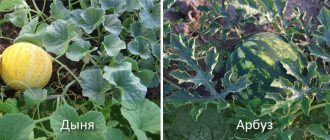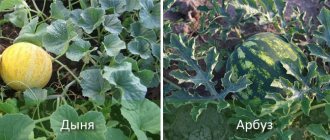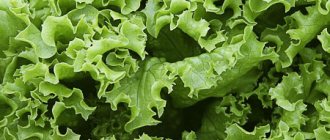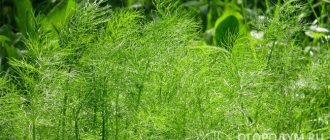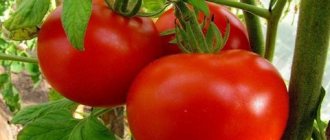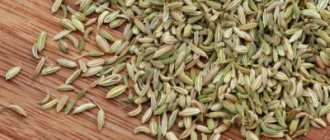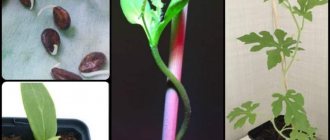Garden spinach (Spinacia oleracea) is a long-day plant, dioecious and cross-wind pollinated. In spring and autumn, spinach forms only a rosette of 8-12 fleshy leaves. At this time, they contain easily digestible proteins, carbohydrates, vitamins C and B, provitamin A, mineral salts - a complex that increases immunity, strengthens blood vessels, improves digestive activity, mitigates vitamin deficiency, overwork and seasonal depression caused by lack of heat and sun.
Depending on the variety, the leaves of garden spinach are triangular-lance-shaped, round or oblong-ovate, like sorrel, smooth-leaved (light green) or wrinkled (dark green). There is even spinach with red petioles and veins (F1 Bordeaux). But all representatives of Spinacia oleracea will have a glossy leaf surface.
When the day becomes long, spinach, first on the male plants (the flowers are collected in a paniculate inflorescence), and a little later on the female plants (located in the axils of the leaves), grow flower stalks. At the same time, the leaves lose their juiciness, and oxalic acid begins to accumulate in them.
Garden spinach is most widespread in the south of the country: seeds germinate already at +4°C, sprouts can withstand short-term frost, frost-resistant varieties overwinter if the temperature does not drop below +10°C. At the same time, spinach is sown in open ground in August, early in April, or before winter. In the middle zone and northern regions, spinach is grown mainly under film covers and when sown before winter. In a heated greenhouse, using artificial supplementary lighting, spinach grows in any corner of our country, and it can be sown at several times from autumn to summer, including as a compactor in the rows of greenhouse cucumbers, peppers, tomatoes and eggplants.
Spinach is a moisture-loving plant with demanding nutritional conditions. Its roots are weak, lying at a depth of 20 cm. Therefore, it grows poorly on light soils, ages quickly in drought and does not tolerate acidity. He also doesn't like cold drafts. Therefore, it is better to allocate places for spinach that are protected from northern and eastern winds, with a slight slope to the south or southeast.
Place it after cucumbers, tomatoes, potatoes, beans, onions, cabbage, having previously filled the soil with rotted manure (5-6 kg/sq.m.) or compost, complex fertilizer (50 g) and dolomite flour or ash (200 g/sq.m. m) to normalize the reaction of the soil solution to pH 6.5. Please note that you cannot apply too much potassium fertilizer - this will lead to bolting of the spinach. After loosening the soil, it is necessary to roll it down so that the seedlings do not stick out of the ground (otherwise they may die from drying out)
.
Due to the fact that spinach has compact rosettes, it is often used as a beacon crop in crops of carrots and root parsley, as a compactor for kohlrabi, radishes, head lettuce, celery and even strawberries. It has been established that spinach roots release substances that have a beneficial effect on the condition of neighboring vegetables and improve the quality of the soil.
In the State Register of Russia, the assortment of spinach varieties is represented by different groups of ripeness: Virofle, Stoik, Krepysh, Matador, Godry, Ispolinsky, Khorovod, Dolphin F1, Povar Mishcha, Puma F1, Rembor F1 (early ripening, cutting leaves can begin after 15 days; when late sowing shoots prematurely), Zhirnolistny, Papaya, Nikitos, Rembrandt, Space F1, Spokein F1, Emerald F1 (mid-ripening, ready for harvesting after 20 days), Victoria, Varyag, Ladya (late-ripening - 25 days after emergence, resistant to flowering and suitable for summer sowing).
However, on the plots of amateur gardeners there is also an unregistered assortment of spinach: varieties Bloomsdale (Blumsdelsky), Marquise and Tyee (early, little bolting), Giant Nobel, Winter Bloomsdale, Chesapeake hybrid (early, resistant to powdery mildew with wrinkled or semi-wrinkled leaves ), Mariska (mid-early, large-leaved), Olympia and Cosmos (with smooth leaves), Long Standing Bloomsdale, Dixie Market, F1 Corenta (mid-late, with large wrinkled leaves). So, if desired, you can select a conveyor of varieties and hybrids of different harvest dates or sow one variety at several times.
Common types
Three varieties are common, with different leaf shapes:
- Leafy is the most popular type. The plates are smoothly rounded. Reddish-brown veins are sometimes found on the green background.
- Aquatic grows near bodies of water in damp areas. The rosette is formed by lanceolate leaves, similar to green onions.
- Strawberry : bred by American breeders. The original spear-shaped leaves on the stem are arranged alternately. Small fruits are formed in the axils - red berries, the fresh taste of which is reminiscent of strawberries or raspberries (hence the second name - spinach-raspberry). Strawberry spinach is rarely grown from seeds: the plant easily propagates by self-sowing, sometimes gardeners even call it a malicious weed. The height of the spreading bushes reaches 55 - 75 cm. Thin stems are tied to a support so that during a bountiful harvest they do not touch the ground. It is poorly stored, so salads are prepared from the leaves immediately after cutting. Ripe fruits are added to tea and mixed with other berries.
Reference! Spinach is a low-calorie leaf crop, rich in biologically active components, macro- and microelements. Contains more iron and protein than other plants. But greens contain a lot of oxalic acid, which causes the formation of oxalate stones, so for diseases of the urinary system, the vegetable is consumed in moderation.
Let's sum it up
Spinach is a healthy plant used to prevent various diseases. It is highly nutritious, contains a large amount of iron, and it is especially important to use it for progressive healthy lifestyles who have given up eating meat products. This plant also contains large amounts of antioxidants and is suitable for consumption by both adults and children. It is not difficult to grow and is much cheaper than buying it at the store.
Video - The trick to planting spinach
Source
How to choose a variety
Varieties differ in terms of ripening:
- early ripening ones begin to be cut 2 weeks after germination (Stoik, Virofle, Cook Misha); if sown in summer, shoots form prematurely;
- mid-season ones are harvested 18 - 22 days after the emergence of seedlings (Papaya, Nikitos, Emerald);
- Late-ripening ones are cut 25 days after germination; do not bolt during summer sowing; sow before the second ten days of August (Corenta, Victoria).
Varieties are selected taking into account the climatic zone.
Germination time
Seeds retain high germination capacity for 5–6 years. If the seeds are fresh, the first seedlings appear 7 to 10 days after sowing. Shoots may appear later if the planting material is not pre-treated or buried in the ground.
What varieties can be grown on a windowsill?
If you choose the right variety, you can get spinach on the windowsill all year round. Pay attention to the following signs:
- ripening time;
- the possibility of obtaining vegetables from seeds at home or in greenhouse conditions;
- resistance to diseases and bolting;
- size, socket density.
The most common varieties for sowing at home:
- Fat-leaved: oblong embossed leaves are collected in a large rosette. The length of each leaf is at least 0.2 m. The plates are fleshy and juicy. Fat-leaved spinach reaches full ripeness 30–33 days after germination.
- Virofle is super early, resistant to infectious diseases and pest attacks. Medium-sized, rich green leaves form into lush bushes. The foliage is tender and tasty, the stems are rough.
- Marquise: surpasses other types in the amount of iodine. Compact rosettes are formed from wavy dark green leaves. At least 2.5 kg of product is collected from 1 m2. Large juicy leaves can be preserved, stewed, or boiled.
Additional Information! It is convenient to sow spinach of different ripening periods using a conveyor. Sowing example: first, early Khorovod spinach is sown; after 7 – 12 days – mid-season variety Cosmos; after 5 - 7 days - mid-late hybrid Corenta.
ALL ABOUT GROWING GREENS: green onions, spinach, lettuce, parsley, dill, cilantro, basil
Healthy greens: green onions, spinach, lettuce, parsley, dill, cilantro, basil
Greens are a source of vitamins and microelements; they contain chlorophyll, which strengthens cell membranes and is involved in the renewal of connective tissue. Green onions, spinach, lettuce, parsley, dill, cilantro, basil - all these are the favorite greens of summer residents (and not only)! Its benefits on our table are undeniable; those who eat greens every day live long and enjoy enviable health. Bunches of fresh, fragrant and aromatic greens, plucked straight from your own garden bed, are worth all the effort! Moreover, growing greens is not so difficult. If you want to avoid typical mistakes when growing greens and have them in your diet every day, watch our film and you will learn: - how to choose and prepare the soil for planting; - how to form beds; — what fertilizers are needed, and how often do you need to fertilize; — how to care for planted greenery: watering, thinning, weeding, loosening, pest and disease control. Our film will help you figure out how to choose the best varieties and check the germination of seeds. You will receive answers to the questions: how to carry out pre-planting treatment of seeds, whether it is necessary to grow seedlings, and for which greens, what planting method to choose, whether it is possible to grow different greens in one bed. We will also tell you folk recipes for an excellent harvest. Growing greens is a rewarding endeavor. We are confident that our film will help you avoid annoying mistakes and oversights, and our advice will help you grow a rich harvest of environmentally friendly, and most importantly, incredibly tasty and healthy greens! Especially for women: Ideal cosmetic products made from parsley and dill - natural, cheap and effective. Whitens, relieves swelling around the eyes; under their influence, the skin becomes soft and fresh, and wrinkles are smoothed out.
Source
How to sow spinach at home
Growing spinach in normal home conditions is more difficult than dill or lettuce. To get a harvest, they carry out preventive work and create comfortable conditions for the development of seedlings.
Pre-sowing work
Seeds and soil can cause common diseases of leafy vegetables. To prevent the occurrence of diseases, pre-sowing preparation of soil, containers and planting material is carried out.
Containers for seedlings
The seeds are sown in deep boxes or flower pots. The depth of the container is at least 0.15 - 0.17 m. The container is washed with a saturated solution of potassium permanganate. Holes are made at the bottom to drain excess liquid. Broken bricks, expanded clay, and pieces of foam plastic are used as drainage.
Reference! The weak root system is located at a depth of 0.2 m. Because of this, the plant does not develop well in light soil and does not tolerate drought.
Seed treatment
The seeds are covered with a dense shell. This may delay the emergence of seedlings. To soften the cover, planting material is placed in lukewarm water for 24–36 hours, which is changed every 5–6 hours. If the package says that the seeds are pre-treated, no additional processing is carried out. Untreated seeds are disinfected in a saturated soda solution or potassium permanganate.
Soil preparation
Take 2 parts of garden soil, add an equal portion of compost and 0.5 portions of sand. This soil mixture can be replaced with a ready-made substrate for growing pumpkin and cabbage seedlings. Choose a mixture that has neutral acidity (6 - 7.5 pH). Before work, the soil is disinfected in the microwave or oven. After cooling, water with a solution of Fitosporin or potassium permanganate.
Additional Information! The vegetable does not like to grow in an acidic environment, so for sowing seeds for seedlings, choose a substrate that contains little peat.
Landing
Sowing is carried out according to the following rules:
- in moist soil, grooves 1.2 - 1.7 cm deep are made at a distance of 5 - 5.5 cm from each other.
- Seeds are laid out every 3 - 3.5 cm and covered with moist soil.
- The containers are covered with film or glass. The shelter is removed during watering (condensation is removed at the same time).
- Before emergence, seedling boxes are kept in a dark place at temperatures up to +22℃.
Reference! To determine when it is best to plant spinach seedlings, take into account the ripening time of the variety and the intended growing location. You should start sowing homemade greens after January 25, after increasing the length of daylight hours. If a gardener wants to grow seedlings at home and transplant them into the garden, they sow in the first ten days of April. Grown bushes are replanted in early May.
Landing rules
They are usually planted in spring or autumn, depending on your personal convenience.
This plant prefers soil rich in nutrients, so it should be fertilized. This is usually done with manure, alfalfa or soybean meal, essentially any substance containing nitrogen. The plant will produce the best results on loamy soils. If the soil is highly acidic, it is advisable to lime it before planting.
REFERENCE! Fertilizer should be applied to a depth of approximately 30 cm.
Seeds should be planted at a distance of twenty centimeters between them. Please note that it is advisable to buy new seeds every year.
To speed up growth, before planting, soak the seeds for a day in warm water, then dip them in a manganese solution for a couple of hours.
How to grow spinach in open ground
Cultivation of leaf crops in beds has features that are taken into account in order to obtain a bountiful harvest.
When to sow
In the summer, when daylight hours lengthen to 14 hours, spinach accelerates growth and begins to bolt. The leaves become dry and rough, and oxalic acid accumulates in them. Taking into account this property of the plant, grains are sown on an open bed at different times:
- in the spring, when the soil warms up to +5 - 7℃ (in the south - in the first half of April, in the middle zone - in early May);
- in the second ten days of August;
- before winter - in the second half of October.
The bed is covered with film or non-woven material to protect the seedlings from sudden cold weather and bright sun.
Very often, spinach is replaced with quinoa, read this interesting article: - Quinoa grass - 6 types, photos and descriptions of beneficial properties.
Landing
In the spring, a garden bed is prepared in the southeastern or southern part of the garden, in the place where cucumbers, different types of cabbage, tomatoes, and beans grew in the previous season. Spinach grows well in loose, fertile soil. Per 1 m2 the following is added to the soil:
- 5.5 kg of compost or rotted manure;
- 0.2 kg of ash;
- 0.05 kg of complex mineral fertilizer.
Additional Information! The roots of seedlings secrete substances that improve the condition of the substrate. Vegetable crops as a compactor are often planted in the same bed with celery, radishes, and carrots.
The crops are placed in rows, leaving 25–35 cm between them. The grains are placed in furrows every 7–9 cm, deepened by 1.7 cm. The soil is rolled so that the roots of the emerging seedlings remain in the ground. If this is not done, they will become weathered and dry out, and the seedlings will die. The plantings are watered from a watering can, sprinkled with dry soil and covered with film for 3 to 5 days. The shelter is removed when seedlings appear. If the air temperature rises above +25℃, the bushes are shaded with non-woven material or shading mesh.
Watering
The plant is moisture-loving and quickly fades from drought. But overwatering causes rotting of the root system and fungal infections. In the Moscow region and other regions with a temperate climate, bushes are watered abundantly on hot days. At other times, watering is replaced by loosening and mulching the root area with crushed bark, coconut substrate or mowed grass. In the southern regions they water more often.
Reference! It is dangerous if abundant irrigation is combined with stagnation of fluid. To prevent the accumulation of moisture in the root zone, when preparing the bed and seedling boxes, create a reinforced drainage layer.
Top dressing
Before sowing, the soil is fertilized; the crop ripens quickly, so it grows well without fertilizing. Additionally, in the spring, nitrogen fertilizers are applied once if the seedlings have slowed down.
Preparing the bed
- with humus and ash
I make a bed with high sides so that moisture is retained. Spinach likes the soil underneath to be constantly moist. Due to lack of moisture, spinach quickly begins to bloom.
- I prepare a fertile bed, add humus (5 liters per 1 m²).
- Our soil is acidic, so I add wood ash and mustard cake to the garden bed. I add ash at the rate of 200 g per 1 m².
- I dig up the soil and rid it of weeds.
— with mineral fertilizers
In the fall, I dig up the area for spinach to the full depth of the arable layer.
In the spring, when the soil dries out, I make beds and apply mineral fertilizers at the rate of 30 g of ammonium nitrate and 5–7 g of potassium chloride per 1 m². You cannot apply a lot of potassium fertilizers, as they promote bolting of spinach.
What crops are planted in the place where spinach grew?
To prevent the development of diseases and soil depletion, crop rotation is observed. After the vegetable, root vegetables (carrots, radishes), beans, and Jerusalem artichoke are sown. Tuberous plants are also planted. The leaf crop is returned to its original site after 3 or 4 years.
How to grow leaf crops in a greenhouse
If the dacha has a greenhouse with artificial lighting and heating, the seeds are sown several times a season, from mid-autumn to early summer. Often bushes are used to compact plantings of peppers, cucumbers or tomatoes. Growing spinach from seeds in greenhouse conditions is a difficult task. The culture develops well when the air circulates freely and the temperature does not rise above + 19 – 20℃.
To get healthy bushes in closed ground, monitor the humidity of the air and substrate, constantly ventilate, avoiding drafts. In a waterlogged environment, the development of fungal infections is possible, and the heat stimulates the appearance of shoots.
Additional Information! The greens are chopped with a ceramic or stainless steel knife to avoid loss of valuable substances due to oxidation. During cooking, the leaves boil down quickly, so boil or simmer for 5 - 7 minutes, adding a little water.
Pests and diseases of spinach
Growing leaf crops from seeds under different conditions is sometimes accompanied by viral diseases, fungal infections, stem and root rots. Fungal spores and bacteria can be found on the shell of the seed or in the contaminated substrate. The appearance of diseases is caused by thickened sowing and stagnation of fluid in the root zone. In the greenhouse, the situation is worsened by irregular ventilation, increased temperature and humidity.
| Name of the disease | Symptoms | Fighting methods |
| Downy mildew | Dirty white coating on the back of the plate; on the upper side there are yellowish cloudy spots that gradually darken; leaves wrinkle; the bush dries up. | Once a week, for prevention, spray with ash infusion or milk-iodine solution (0.5 liters of milk, 5 liters of water, 5 drops of iodine). |
| Fusarium | The roots become covered with mucus and turn black; the foliage loses its luster and turns yellow; the stems darken; the bush stops growing. | At an early stage, bushes and soil are pollinated with ash and tobacco dust; watered with potassium permanganate. Affected plants are destroyed. The bed is treated with Fitosporin. |
| Anthracnose | The stems and leaf blades are covered with dark, raised spots. | Plants are sprayed with Previkur, Trichodermin. |
| Viral mosaic | The bushes stop growing. Light spots and stripes appear on deformed leaves. | Affected bushes are burned. |
| Leaf curl | The leaves thicken and wrinkle, and become unevenly covered with swellings. | Plants affected by the virus are destroyed. |
| Ramulariasis | Small grayish specks are formed on the plates, surrounded by a black border. The leaves quickly dry out and die. | Before sowing, seeds are soaked in a solution of Bordeaux mixture. |
| Ascochyta blight | The bush stops growing. The leaves quickly become covered with brown raised spots, darkening closer to the edges. The fabrics are drying. | Before sowing, the seeds are kept in a solution of copper sulfate (1%). |
In closed, as in open ground, plantings can be attacked by aphids. Foliage affected by the insect curls and withers. Small bugs appear on the reverse side. The bush grows quickly, so they try not to use chemicals. Single pests are washed off with water or manually removed with a dampened cloth. Affected bushes are destroyed. The greens are sprayed with tobacco infusion. The soil is spilled with a saturated solution of potassium permanganate or Fitosporin.
How to collect and preserve the harvest
The harvest is harvested in the first half of the day, in dry weather. This is done gradually to renew the rosette and extend the period of fruiting. The largest lower leaves are cut off first. The bushes are completely removed after the formation of a peduncle. Greens are packaged in plastic bags. Store in the refrigerator for 4 – 5 days. For long-term storage, the leaves are washed, blotted with paper napkins, and dried. Varieties with dense leaves can be preserved. Pre-pressed leaves are frozen. Nutrients are not lost 4–5 months after harvest.
Additional Information! The appearance of arrowheads causes stiffness of the foliage and reduces the quality of the greenery. Therefore, there is no need to delay harvesting.
Planting care
Further care for spinach consists of weeding, watering, loosening and pest and disease control. The plant also loves frequent, abundant watering; without it, it very quickly goes to waste and becomes rough.
- After germination, I remove the cover, loosen the soil between the rows, remove weeds and water in a timely manner.
- When the spinach has cotyledon leaves, I protect it from pests. I sprinkle tobacco dust, ash, mustard powder or red pepper between the rows.
- When the plants have two true leaves, I thin them at a distance of 10 cm.
For a better set of green mass, fertilizing is done with herbal infusions and potassium humate.
As soon as the greens grow to 30–40 cm, you can begin harvesting. Spinach is placed in plastic bags and stored in the refrigerator. Greens stay fresh for up to two weeks.
He gets along well and is completely undemanding, but nevertheless, he deserves neatness, care and care towards himself. Spinach absolutely loves moisture and will die if left too dry for a long time. Water it daily and spray it often with a spray bottle.
From time to time, you can cover the plants with plastic film to create the necessary humidity conditions for them.
Monitor the temperature in the greenhouse. At temperatures above sixteen degrees it may become unsuitable for consumption.
IMPORTANT! Moisture should not be allowed to stagnate, otherwise the plant may begin to hurt.
Useful tips
Tips from gardeners will help you grow healthy leafy vegetables from seeds in the open ground, at home and in a greenhouse:
- carry out pre-sowing treatment of seedling containers, soil, seeds;
- soaking the grains in the fungicidal preparation Maxim will speed up germination and protect the plant from fungal infections;
- observe crop rotation, spinach is not planted in the garden after beets: crops are prone to the same diseases;
- if only a low-lying area in the garden is free, a high bed is built for sowing;
- It is possible to reduce the acidity of the soil if you add lime 3-4 months before sowing;
- do not allow the soil to dry out: drought provokes bolting;
Seedlings develop well only in well-drained soil.
Spinach grows quickly. During the short growing season, the plant gives little trouble to the gardener. The quality of the harvest largely depends on preliminary work - selection of variety, soil preparation and seed material.
